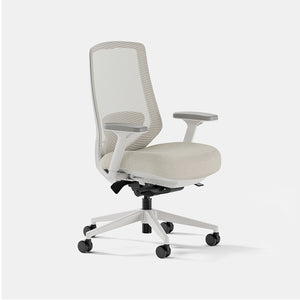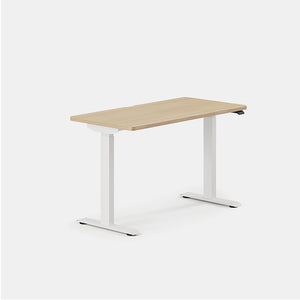Preventing ergonomic injuries requires a proactive approach to workspace design, body posture, and work habits. Here are some practical steps you can take:
Creating an Ergonomic Workspace: Start by adjusting your chair to ensure your feet are flat on the floor and your knees are at or slightly lower than hip level. Your monitor should be at eye level and about an arm's length away. When typing, your wrists should be straight and your elbows close to your body, creating an L-shape at the elbow joint.
Choosing the Right Office Furniture: Investing in ergonomic furniture is a key step to preventing these injuries. Look for chairs with good lumbar support and adjustability, desks at the right height, and consider using ergonomic accessories like keyboard trays or a mouse that fits well in your hand. Our own range of performance seating has been designed keeping these principles in mind.
Regular Breaks and Exercise: Take short breaks every 30 minutes to stretch or walk around. Regular movement helps to avoid the strain that comes from sitting in one position for too long.
Proper Posture: Maintain a neutral body position, with your back straight, shoulders relaxed, and arms close to your sides. This reduces strain on your muscles and joints.
Consistent movement and stretching are vital components of an ergonomic approach to office work. Sitting or performing repetitive tasks for extended periods can strain your body, leading to discomfort and potentially more serious injuries over time. To counteract this, frequent breaks and specific stretches can make a significant difference.
Stretching Exercises: Incorporating simple stretching exercises into your workday can greatly aid in preventing ergonomic injuries. Here are a few suggestions:
Neck Stretch: Gently tilt your head towards your shoulder and hold for 15 to 20 seconds on each side. Repeat a few times throughout the day.
Wrist Stretch: Extend your arm in front of you with your palm up. With your other hand, gently bend your wrist down to stretch your forearm, and hold for 15 to 20 seconds. Repeat on the other side.
Back and Shoulder Stretch: Stand and interlock your fingers, then turn your palms towards the ceiling. Stretch upward, and hold for 10 to 15 seconds.
Hip and Knee Stretch: While sitting, hug one knee at a time, pulling it toward your chest. Hold this position for 15 to 20 seconds. Repeat with your other knee.
Perform these stretches gently and slowly to avoid injury.
Integrating regular breaks and stretches into your work routine can significantly reduce the risk of ergonomic injuries, enhance your comfort, and boost your productivity. It's a small investment of time for a large payoff in health and efficiency.














